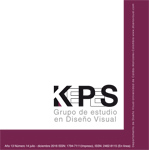Authors
Abstract
In Colombia, the animation industry has advanced at a slower pace with respect to countries such as the United States, Canada, and Japan among others, suggesting an obvious disadvantage the way 2D and 3D animation projects are developed, from the planning and execution of processes within the animation company work.
However, overtime, foreign alliances for the production of content have been established, allowing this sector to be an alternative to boost economic growth in the regions, adding national production for advertising, architecture, film, television and videogames. For these reasons, the Colombian animation industry has received attention from public and private entities who see the need to establish policies focused on supporting and establishing appropriate conditions for its emergence.
One initiative is to improve the productive conditions of enterprises through the “Guide to international quality good practices for the Digital Animation Industry identified and documented as a guide for the Colombian industry” proposed by the Ministry of Information Technologies and Communications, Colciencias, the Manizales Mayor’s Office and People Contact, with the support of Universidad de Caldas in research development, from the inquiry about the existing animation companies in the country, development of instruments in the form of personal interview on the qualitative and quantitative approaches, bibliographical inquiry to support proposed workflows, process of validation with experts and socialization to animators and entrepreneurs.
The guide emerges as a reference of support for the Colombian animation industry, the monitoring and improvement of processes that allow establishing quality parameters, which means an important opportunity to enhance the competitiveness of Colombian animation in the global industry
References
Cámara de Comercio de Bogotá. (2010). Diagnóstico y plan de acción para la industria de animación digital y videojuegos de Bogotá. Recuperado de: http://bibliotecadigital.ccb.org.co/handle/11520/3000
Centro Colombiano del Derecho de Autor. (s/f). CECOLDA - Centro Colombiano del Derecho de Autor - CECOLDA. Recuperado de http://www.cecolda.org.co/
Dirección nacional de derecho de autor en Colombia. (2016). Sobre la DNDA - Derecho de Autor. Recuperado de: http://derechodeautor.gov.co/
European Software Institute. (2016). ITmark. Recuperado de: http://it-mark.eu/wordpress/?lang=es
Fuerst, S. (2010). Global Value Chains and Local Cluster Development: A Perspective on Domestic Small Enterprises in the 3D-Animation Industry in Colombia. AD-Minister, 0(16), 83–98.
Gandia, R. (2013). The Digital Revolution and Convergence in the Videogame and Animation Industries: Effects on the Strategic Organization of the Innovation Process. International Journal of Arts Management, 15(2), 32–44.
Hyejin Yoon & Malecki, E.J. (2010). Cartoon planet: worlds of production and global production networks in the animation industry. Industrial & Corporate Change, 19(1), 239–271. http://doi.org/10.1093/icc/dtp040
International Organization for Standardization. (s/f). ISO/IEC 27001:2013 - Information technology -- Security techniques -- Information security
management systems -- Requirements. Recuperado de: http://www.iso.org/iso/catalogue_detail?csnumber=54534
Keane, M., Ryan, M.D.& Cunningham, S. (2005). Worlds apart? Finance and investment in creative industries in the People’s Republic of China and Latin America. Telematics and Informatics, 22(4), 309–331. Disponible en http://doi.org/10.1016/j.tele.2005.01.005
Le Goff, J, &Mouline, A. (2003). Les Stratégies des firmesdans les industries du multimédia: 10 ans dopérations de rapprochement. Paris: Ministère del Economieet des Finances.
Manizales Vive Digital. (2014). Guía de buenas prácticas de calidad internacional para la industria de animación digital identificadas y documentadas como referente para la empresa colombiana. Ministerio de las Tecnologías de la Información y las Comunicaciones. Recuperado de: https://drive.google.com/file/d/0B0WusSqFE3l-NjZvSzU0NnhUb0E/edit
Mastrini, G.& Becerra, M. (2005). Estructura y dimensión de las industrias infocomunicacionales en América Latina. Palabra Clave, 12(0). http://doi.org/10.5294/1438
Ministerio de las tecnologías de la información y las comunicaciones. (s/f). Promoción de la Industria de Contenidos Digitales - MINTIC - Vive Digital. Recuperado de: http://www.mintic.gov.co/portal/vivedigital/612/w3-propertyvalue-661.html
Proimágenes. (s/f). Convocatorias FDC: Estímulos por Concurso. Recuperado de: http://www.proimagenescolombia.com/secciones/fdc/convocatorias/estimulos_concurso.php
Propiedad intelectual Colombia. (s/f). Propiedad Intelectual | Página principal. Recuperado de: http://www.propiedadintelectualcolombia.com/site/
Research and Markets. (2014). Global Animation Industry: Strategies Trends & Opportunities. Recuperado de: http://www.researchandmarkets.com/reports/3607769/global-animation-industry-strategies-trends-and
Simon, M.A. (2003). Producing Independent 2D Character Animation: Making & Selling A Short Film. Amsterdam: Boston: Focal Press.
Welfens, P.J.J. (2007). Digital Integration, Growth and Rational Regulation. Springer Science & Business Media.
Westcott, T. (2010). An overview of the global animation industry. Creative Industries Journal, 3(3), 253–259. http://doi.org/10.1386/cij.3.3.253_1
Zotto, C.D. & Kranenburg, H. van. (2008). Management and Innovation in the Media Industry. Edward Elgar Publishing.
Entrevistas
Carlos Smith. (2014, junio 20). Entrevista Hierro.
Lapost. (2014, mayo 21). Entrevista lapost.
Leonardo Lamprea. (2014, mayo 3). Entrevista Somos.
Marcos Cárdenas. (2014, mayo 18). Entrevista Animeco.

 pdf (Español (España))
pdf (Español (España))
 FLIP
FLIP






















